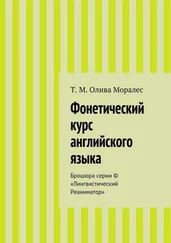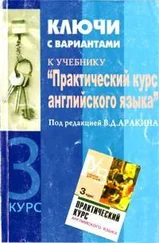carefully until you can say it in exactly the same way. c) Memorize the
dialogue and dramatize it.
VII.
a) Read the following special questions. Concentrate on the intonation.
Observe the weak forms of the pronouns and the verb to be:
1. ->When is she vbusy? 2. -»Why are you vlate? 3. -»When are you vfree?
4. -»When are you vbusy? 5. ->Why are you xsad? 6. VWhy is 'Betty in the
vpark? 7. VWhy is Mrs. 'Sandford in vbed? 8. VWhy is he 'still at the
^hospital? 9. -»When is she at vhome? 10. VWhy is she 'still at vhome?
b) Change the special question into general ones and answer them as in the
model. Work in pairs.
M o d e l : Why is he in bed? Is
he in bed? Yes, he is.
58
"V.
VIII.
Answer the following questions:
1. Is Doctor Sandford in? 2. Where is he? 3. Is Mrs. Sandford at home? 4.
Is Mrs. Sandford in the park with Benny? 5. She isn't in the garden, is she? 6.
Old Mrs. Sandford isn't ill, is she? 7. Is she in bed? 8. She is better today, isn't
she? 9. Is Mr. Sandford at home after four on Saturday? 10. Is he at home after
four or at half past four on Saturday?
IX. a) Complete the following general questions to make them alternative.
M о d e 1 :-4s he,busy? —-»Ishe,busy |orvfree?
1. Are they in the garden ...? 2. Is your sister at the Institute ...? 3. Is
Doctor Sandford at the hospital...? 4. Is his wife in the park ...? 5. Is the
exercise easy. .? 6. Is Betty nineteen ...? 7. Is the hall big...? 8. Are you free on
Saturday ...? 9. Are these lessons difficult...? 10. Is this sentence long...?
b) Change these general questions into disjunctive ones. Mind the intonation.
M о d e 1: -»Is he ,busy? — He is vbusyt | ,isn't he?
X. Give the following sentences in the plural.
M o d e l : This is a pen. These are pens.
1. This is a box. 2. This is a spoon. 3. That is a fork. 4. This is a park. 5.
That is a garden. 6. This is a desk. 7. That is a door 8. This is my bird. 9. That
is his dog. 10. That is her daughter.
XL Give the degrees of comparison of the following adjectives and transcribe
them:
short, tall, large, nice, long, big, red, high, dirty, fast, easy, good, bad, few,
busy, near, far, old, late, thin, thick, comfortable, interesting, difficult, narrow.
XII.
Rewrite the following sentences changing as ... as into not so as or not as ...
as:
1. She is as young as you are. 2. He is as clever as his father is. 3. I am as
tired as you are. 4. My mother is as old as yours. 5. This book is as interesting
as that one. 6. These dictations are as bad as those ones. 7. My father is as tall
as yours. 8. His daughter is as beautiful as his wife. 9. My room is as light as
yours. 10. This new house is as big as the old one. 11. This boy is as clever as
that one.
XIII.
Rewrite the following sentences changing not so ... as into less ... than:
59
1. She is not so tired as I am. 2. The child is not so sleepy as you are. 3.
This task is not so important as that one. 4. This book is not so interesting as
that one. 5. Spanish is not so difficult as Chinese. 6. There is not so much ink
in my fountain-pen as in yours.
XIV.
a) Respond to the following sentences. Express your surprise or doubt as
in the models.
M o d e l 1 : This is a good car. Is it?
M o d e l 2: This isn't a good car. Isn't it?
1. This is a light room. 2. This is a big dog. 3. This is a dark garden. 4.
This isn't a bad book. 5. This is a nice animal. 6. T!..^ isn't a good shop. 7.
This isn't a big city. 8. This is a long sentence. 9. This isn't a thick exercise-
book. 10. This is a difficult test. 11. This is an interesting story. 12. This isn't a
bad idea. 13. This isn't a clever answer. 14. This isn't a small park.
Ы Go on with the exercise until everyone has participated. Work in pairs.
XV.
a) Let the members of the class ask and answer questions as in the model.
Give a short answer using contracted forms. Add a sentence of your own.
M o d e l ' Is your sister a student?
No, she isn't. She is still a pupil.
b) Respond to the negative sentence of your fellow-student as in the model. Use
contracted forms. Work in pairs.
M o d e l : His father isn't a doctor.
No, he isn't. He is an officer.
XVI.
a) Give questions to the following sentences:
1. On Saturday Mr. Sandford is at home after four. 2. My brother is still at
the office. 3. Mr. Smith is a good doctor. 4. My mother is glad to see you.
b) Each sentence describes a certain situation in a concise way. Some points of
the situation are already known to you. Find out some more details about the
situation by asking questions. Work in pairs. Use conversational phrases expressing
approval and disapproval where possible.
M o d e l : Mrs. Sandford is in the park.
Nice, isn't it? Is she alone there?
No, she isn't.
With whom is she there?
With Benny, her son, you know.
Yes, I see.
60
XVII.
Let the members of the class ask and answer questions as in the model.
Use contracted forms.
M o d e l 1 . Is she as tall as her friend?
She's much taller than her friend. M o d e l 2 : Is
Nina active?
She's the most active of all.
XVIII.
Translate the following into English:
1. В чем дело (что случилось)? — Джон болен. 2. Он лежит? — Да, но
ему сегодня лучше. 3. Том дома? — Нет, его нет. Он обычно бывает дома
в пять. 4. В субботу я бываю дома в четыре. 5. Где Бэнни? — Он в парке.
6. Кто он? — Он врач. 7. Доктор Сэндфорд дома? — Он еще в больнице.
8. Бэнни в парке, не так ли? 9. Когда они бывают дома в субботу? — В
шесть. 10. Они всегда рады видеть вас. 11. Какая жалость, что его нет
дома. 12. Какая жалость, она все еще в постели.
ADDITIONAL PHONETIC EXERCISES
1. Read the exercise several times before the mirror.
2. Record your reading and listen to it, detect your errors.
3. Listen to your fellow-student reading the exercise. Detect his errors in sounds
and intonation and tell him what he must do to get rid of them.
a) pi:t — pit — pet — pset — pat — pot — p3:t — po:t — put
ri:d — rid — red — reid — raid — r3ud — ru:d
b) -» тлдэг iz at vh3um || -> fadar iz in di' vofis | -> sistar iz ill
бэ vga:dn || -> Ьглбэг iz at дэ vsteidi3m | дэ тэеп iz in дэ vstri:t | дэ
-> woman iz in дэ vmakit | дэ -> дз:1 iz in дэ xpa:k ||
LABORATORY WORK
Читать дальше





![Владимир Аракин - Практический курс английского языка 3 курс [calibre 2.43.0]](/books/402486/vladimir-arakin-prakticheskij-kurs-anglijskogo-yazyk-thumb.webp)






